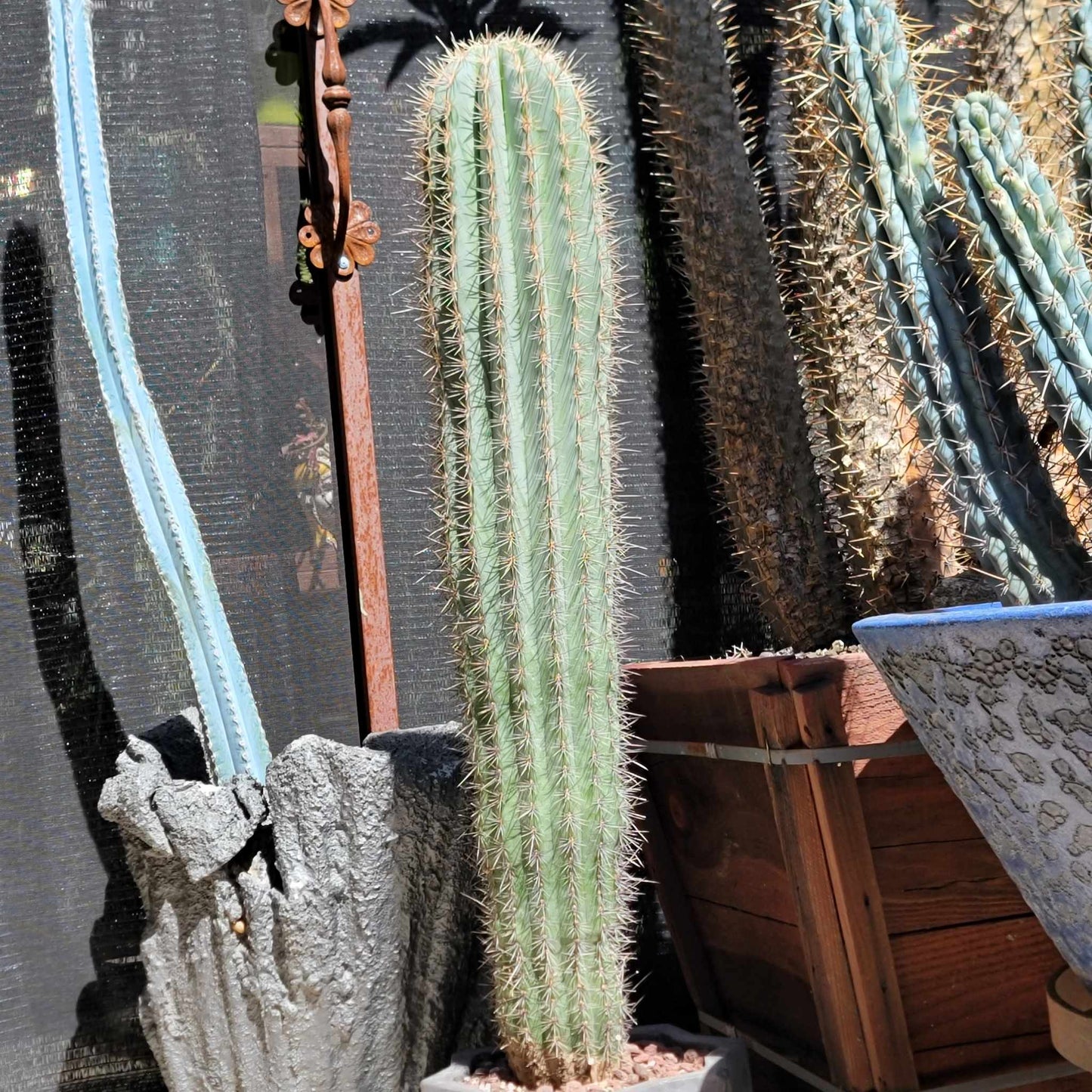Shangri-Ha Cactus Ranch
Pachycereus Pringlei - False Saguaro Cardon - 35" Tall!
Pachycereus Pringlei - False Saguaro Cardon - 35" Tall!
Couldn't load pickup availability
Pachycereus Pringlei - False Saguaro Cardon - 35” Tall!
You will receive this exact BIG specimen.
Measures 35" tall.
Roots as shown.
This is a very large and heavy specimen and will be a little expensive to ship.
Will be shipped bare root.
Pachycereus pringlei, also known as the Cardón cactus, Mexican giant cactus, Elephant cactus, or False Saguaro, is a towering and iconic cactus native to the Sonoran Desert in Mexico, particularly in the states of Baja California, Baja California Sur, and Sonora.
Key Characteristics:
- Size: It is considered the tallest living cactus species in the world, with some specimens reaching over 60 feet (18 meters) tall and a trunk diameter of up to 3 feet (1 meter).
- Appearance: It has a stout, columnar trunk that can reach up to 1 meter in diameter. As it ages, it develops numerous branches, giving it a tree-like appearance. The stems have 11 to 17 ribs covered with areoles, which may have spines when young, but can become spineless with age.
- Growth and Lifespan: It is a slow-growing cactus, taking decades to reach maturity and living for hundreds of years.
- Flowers and Fruits: It produces white, bell-shaped flowers that bloom for only one day, typically in the late afternoon and remain open until noon the next day. These flowers are often pollinated by bats and insects. After flowering, edible red fruits develop on the top of mature arms.
- Adaptability: This cactus is highly drought-tolerant and has adapted to thrive in arid environments with minimal water. It stores water in its stems and trunk, allowing it to survive prolonged droughts.
Ecological and Cultural Significance:
- Habitat and Food: The Cardón cactus provides habitat and food for various desert animals, including birds and bats.
- Traditional Uses: Native inhabitants of northwestern Mexico have traditionally used the fruits as a food source, eaten fresh or processed into pinole or a juice. The woody ribs of the cactus were also used for construction, firewood, and tools. Some parts of the cactus have also been used for medicinal purposes, including as a bandage for wounds.
Care and Cultivation:
- Sunlight: It thrives in full sun.
- Soil: It requires well-draining, sandy or rocky soil and is susceptible to root rot if overwatered.
- Watering: Water immature plants regularly during the summer, allowing the soil to dry out completely between waterings. Mature plants have very low water needs and may require little to no supplemental watering.
- Temperature: It can tolerate short periods of cold temperatures, but it's best to protect it from hard frost (below 25°F). The ideal temperature range is generally above 32°F.
- Propagation: It can be propagated from seeds or cuttings.









